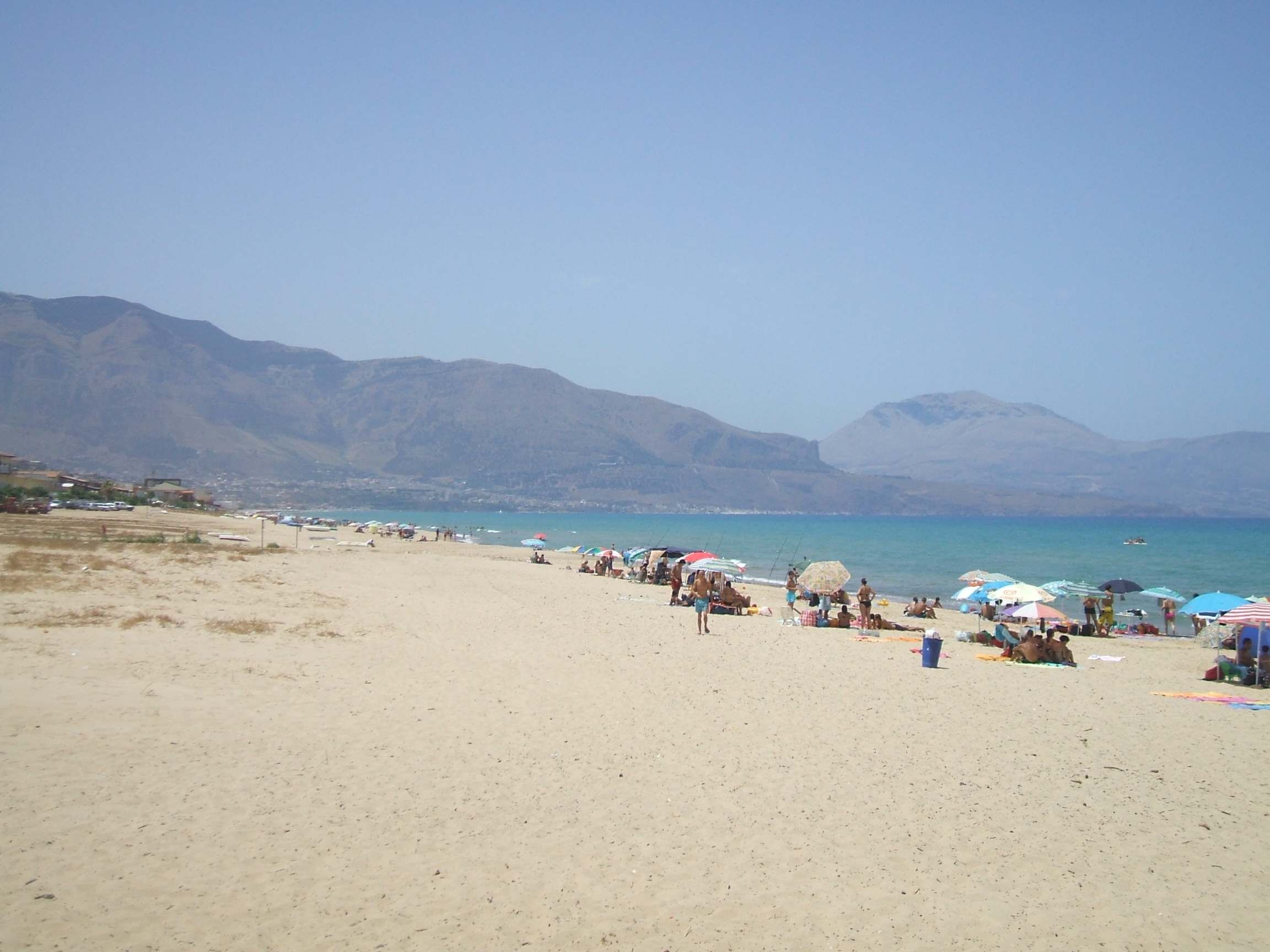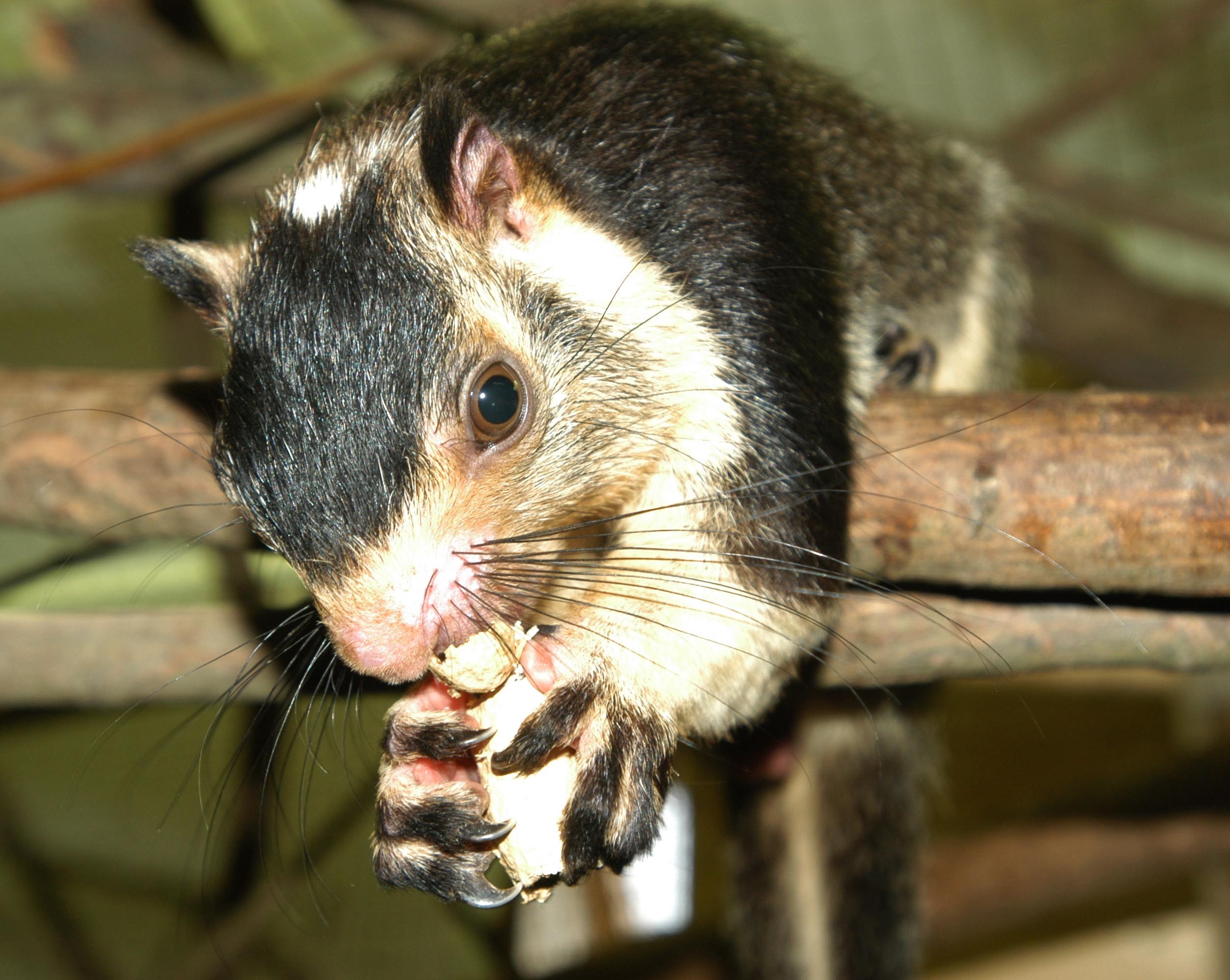|
Mount Bonifato
Mount Bonifato (825 metres high) is a mountain in north western Sicilly in the province of Trapani. It is famous for the pine forest and the Nature Reserve Bosco di Alcamo. On its slopes they have found a proto-historic necropolis and traces of an ancient settlement. If you go up to the peak you can see the remains of an old water reservoir (called Funtanazza) and a gate (called Porta della Regina), which implies the existence of surrounding walls.Gruppo Archeologico Drepanon, Bonifato - La montagna ritrovata, Trapani, Il Sole editrice, 2014, . Besides, on the top there are the remains of a castle with four towers, that was built at the end of the 14th century by the Ventimiglia family, feudal lords of the territory of Alcamo for a certain period. Territory Mount Bonifato is located in the hinterland of Golfo di Castellammare, between the valley of Fiume Freddo (a river on the west) and Fiume Jato (a river on the east). It shows quite steep faces on the south, while ... [...More Info...] [...Related Items...] OR: [Wikipedia] [Google] [Baidu] |
Alcamo
Alcamo (; scn, Àrcamu, italic=no) is the fourth-largest town and communes of Italy, commune of the Province of Trapani, Sicily, with a population of 44.925 inhabitants. It is on the borderline with the Metropolitan City of Palermo at a distance of about 50 kilometres from Palermo and Trapani. Nowadays the town territory includes an area of 130,79 square kilometres and is the second municipality as for population density in the province of Trapani, after Erice. Alcamo is bounded by the Tyrrhenian Sea on the north, Balestrate and Partinico on the east, Camporeale on the south and Calatafimi-Segesta and Castellammare del Golfo on the west. Its most important hamlet is Alcamo Marina at about 6 kilometres from the town centre. Together with other municipalities it takes part in the ''Associazione Città del Vino'', the movement ''Patto dei Sindaci'', ''Progetto Città dei Bambini'', ''Rete dei Comuni Solidali'' and ''Patto Territoriale Golfo di Castellammare''. Geography Terr ... [...More Info...] [...Related Items...] OR: [Wikipedia] [Google] [Baidu] |
Aptian
The Aptian is an age in the geologic timescale or a stage in the stratigraphic column. It is a subdivision of the Early or Lower Cretaceous Epoch or Series and encompasses the time from 121.4 ± 1.0 Ma to 113.0 ± 1.0 Ma (million years ago), approximately. The Aptian succeeds the Barremian and precedes the Albian, all part of the Lower/Early Cretaceous. The Aptian partly overlaps the upper part of the Western European Urgonian Stage. The Selli Event, also known as OAE1a, was one of two oceanic anoxic events in the Cretaceous Period, which occurred around 120 Ma and lasted approximately 1 to 1.3 million years. The Aptian extinction was a minor extinction event hypothesized to have occurred around 116 to 117 Ma.Archangelsky, Sergio.The Ticó Flora (Patagonia) and the Aptian Extinction Event" ''Acta Paleobotanica'' 41(2), 2001, pp. 115-22. Stratigraphic definitions The Aptian was named after the small city of Apt in the Provence region of France, which is also known ... [...More Info...] [...Related Items...] OR: [Wikipedia] [Google] [Baidu] |
Geosite Travertino Della Cava Cappuccini (Alcamo)
The Geosite Travertino della Cava Cappuccini (or Cave Orto di Ballo) is located in Alcamo, in the province of Trapani, in Sicily. History Since 2010 the Ministry of the Environment), through l’ISPRA (Superior Institute for the environmental protection and research) had included it in the official list of Italian geosites. By decree of 1 December 2015, the Regional Department of Land and Environment has established this geosite, recognising it of a Paleontological/Stratigraphic type of worldwide importance. Its area is formed by the wall of a quarry and a narrow strip of land at its beginning. The travertine quarries were recovered some years ago, thanks to the financing of the European funds of the Por-Fesr 2007/2013. The project of requalification and the realization of an amphitheatre at disposal of the ''Cittadella dei giovani'' in the area of Orto di Ballo, had put part of the Paleontological site in danger; after the protests by the citizens' Committee called ... [...More Info...] [...Related Items...] OR: [Wikipedia] [Google] [Baidu] |
Paleontology
Paleontology (), also spelled palaeontology or palæontology, is the scientific study of life that existed prior to, and sometimes including, the start of the Holocene epoch (roughly 11,700 years before present). It includes the study of fossils to classify organisms and study their interactions with each other and their environments (their paleoecology). Paleontological observations have been documented as far back as the 5th century BC. The science became established in the 18th century as a result of Georges Cuvier's work on comparative anatomy, and developed rapidly in the 19th century. The term itself originates from Greek (, "old, ancient"), (, (gen. ), "being, creature"), and (, "speech, thought, study"). Paleontology lies on the border between biology and geology, but differs from archaeology in that it excludes the study of anatomically modern humans. It now uses techniques drawn from a wide range of sciences, including biochemistry, mathematics, and engineeri ... [...More Info...] [...Related Items...] OR: [Wikipedia] [Google] [Baidu] |
Pleistocene
The Pleistocene ( , often referred to as the ''Ice age'') is the geological epoch that lasted from about 2,580,000 to 11,700 years ago, spanning the Earth's most recent period of repeated glaciations. Before a change was finally confirmed in 2009 by the International Union of Geological Sciences, the cutoff of the Pleistocene and the preceding Pliocene was regarded as being 1.806 million years Before Present (BP). Publications from earlier years may use either definition of the period. The end of the Pleistocene corresponds with the end of the last glacial period and also with the end of the Paleolithic age used in archaeology. The name is a combination of Ancient Greek grc, label=none, πλεῖστος, pleīstos, most and grc, label=none, καινός, kainós (latinized as ), 'new'. At the end of the preceding Pliocene, the previously isolated North and South American continents were joined by the Isthmus of Panama, causing a faunal interchange between the two reg ... [...More Info...] [...Related Items...] OR: [Wikipedia] [Google] [Baidu] |
Aquifer
An aquifer is an underground layer of water-bearing, permeable rock, rock fractures, or unconsolidated materials ( gravel, sand, or silt). Groundwater from aquifers can be extracted using a water well. Aquifers vary greatly in their characteristics. The study of water flow in aquifers and the characterization of aquifers is called hydrogeology. Related terms include aquitard, which is a bed of low permeability along an aquifer, and aquiclude (or ''aquifuge''), which is a solid, impermeable area underlying or overlying an aquifer, the pressure of which could create a confined aquifer. The classification of aquifers is as follows: Saturated versus unsaturated; aquifers versus aquitards; confined versus unconfined; isotropic versus anisotropic; porous, karst, or fractured; transboundary aquifer. Challenges for using groundwater include: overdrafting (extracting groundwater beyond the equilibrium yield of the aquifer), groundwater-related subsidence of land, groundwater becoming ... [...More Info...] [...Related Items...] OR: [Wikipedia] [Google] [Baidu] |
Hydrogeology
Hydrogeology (''hydro-'' meaning water, and ''-geology'' meaning the study of the Earth) is the area of geology that deals with the distribution and movement of groundwater in the soil and rocks of the Earth's crust (commonly in aquifers). The terms groundwater hydrology, geohydrology, and hydrogeology are often used interchangeably. Hydrogeology is the study of the laws governing the movement of subterranean water, the mechanical, chemical, and thermal interaction of this water with the porous solid, and the transport of energy, chemical constituents, and particulate matter by flow (Domenico and Schwartz, 1998). Groundwater engineering, another name for hydrogeology, is a branch of engineering which is concerned with groundwater movement and design of wells, pumps, and drains. The main concerns in groundwater engineering include groundwater contamination, conservation of supplies, and water quality.Walton, William C. (November 1990). ''Principles of Groundwater Engi ... [...More Info...] [...Related Items...] OR: [Wikipedia] [Google] [Baidu] |
Holocene
The Holocene ( ) is the current geological epoch. It began approximately 11,650 cal years Before Present (), after the Last Glacial Period, which concluded with the Holocene glacial retreat. The Holocene and the preceding Pleistocene together form the Quaternary period. The Holocene has been identified with the current warm period, known as MIS 1. It is considered by some to be an interglacial period within the Pleistocene Epoch, called the Flandrian interglacial.Oxford University Press – Why Geography Matters: More Than Ever (book) – "Holocene Humanity" section https://books.google.com/books?id=7P0_sWIcBNsC The Holocene corresponds with the rapid proliferation, growth and impacts of the human species worldwide, including all of its written history, technological revolutions, development of major civilizations, and overall significant transition towards urban living in the present. The human impact on modern-era Earth and its ecosystems may be considered of global ... [...More Info...] [...Related Items...] OR: [Wikipedia] [Google] [Baidu] |
Tortonian
The Tortonian is in the geologic time scale an age or stage of the late Miocene that spans the time between 11.608 ± 0.005 Ma and 7.246 ± 0.005 Ma (million years ago). It follows the Serravallian and is followed by the Messinian. The Tortonian roughly overlaps with the regional Pannonian Stage of the Paratethys timescale of Central Europe. It also overlaps the upper Astaracian, Vallesian and lower Turolian European land mammal ages, the upper Clarendonian and lower Hemphillian North American land mammal ages and the upper Chasicoan and lower Huayquerian South American land mammal ages. Definition The Tortonian was introduced by Swiss stratigrapher Karl Mayer-Eymar in 1858. It was named after the Italian city of Tortona in the region Piedmont it, Piemontese , population_note = , population_blank1_title = , population_blank1 = , demographics_type1 = , demographics1_footnotes = , demographics1_title1 = , demographics1_info1 = , dem ... [...More Info...] [...Related Items...] OR: [Wikipedia] [Google] [Baidu] |
Langhian
The Langhian is, in the International Commission on Stratigraphy, ICS geologic timescale, an age (geology), age or stage (stratigraphy), stage in the middle Miocene epoch (geology), Epoch/series (stratigraphy), Series. It spans the time between 15.97 ± 0.05 annum, Ma and 13.65 ± 0.05 Ma (million years ago) during the Middle Miocene.GeoWhen (2007) The Langhian was a continuing warming period defined by Lorenzo Pareto in 1865, it was originally established in the Langhe area north of Ceva in northern Italy, hence the name. The Langhian is preceded by the Burdigalian and followed by the Serravallian Stage. Stratigraphic definition The base of the Langhian is defined by the first appearance of foraminifer species ''Praeorbulina glomerosa'' and is also coeval with the top of magnetic chronozone C5Cn.1n. A GSSP for the Langhian Stage was not yet established in 2009. The top of the Langhian Stage (the base of the Serravallian Stage) is at the first occurrence of fossils of the Plankt ... [...More Info...] [...Related Items...] OR: [Wikipedia] [Google] [Baidu] |
Burdigalian
The Burdigalian is, in the geologic timescale, an age or stage in the early Miocene. It spans the time between 20.43 ± 0.05 Ma and 15.97 ± 0.05 Ma (million years ago). Preceded by the Aquitanian, the Burdigalian was the first and longest warming period of the MioceneEdward Petuch, Ph.D. Florida Atlantic University, Department of Geosciences. and is succeeded by the Langhian. Stratigraphic definition The name Burdigalian comes from ''Burdigala'', the Latin name for the city of Bordeaux, France. The Burdigalian Stage was introduced in scientific literature by Charles Depéret in 1892. The base of the Burdigalian is at the first appearance of foram species ''Globigerinoides altiaperturus'' and the top of magnetic chronozone C6An. , an official GSSP for the Burdigalian had not yet been assigned. The top of the Burdigalian (the base of the Langhian) is defined by the first appearance of foram species ''Praeorbulina glomerosa'' and is also coeval with the top of magnetic chr ... [...More Info...] [...Related Items...] OR: [Wikipedia] [Google] [Baidu] |







